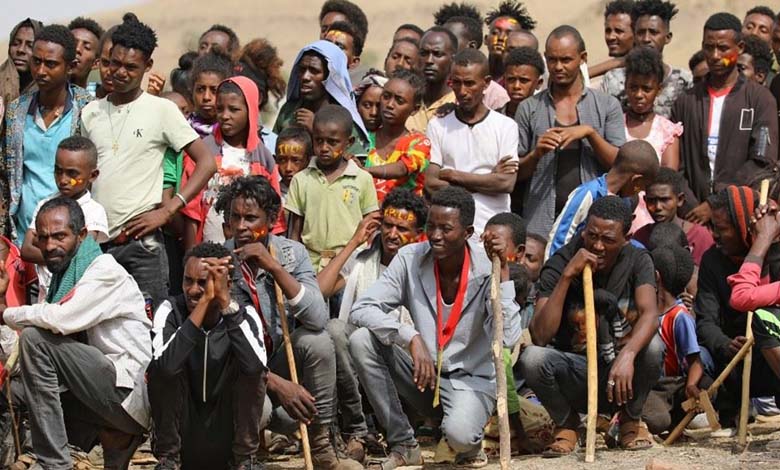Few survivors in the journey to the “Arab Paradise” via the Eastern Route
Tens of thousands of migrants, mostly from Ethiopia, take the risk every year to reach Saudi Arabia through the Horn of Africa region. However, many die or fail to reach their destination

The “Eastern Route” is considered one of the most dangerous and complex migration routes in Africa and the world, as described by the International Organization for Migration. Nevertheless, the risks surrounding it do not deter Ethiopian migrants from attempting to cross it in pursuit of a better life in the Gulf.
Armed conflicts and climate disasters ravage Ethiopia, the second-most populous country in Africa. Abu Jizo, 23 years old, bears scars on his back as a painful reminder of his fruitless journey seeking a better life in the Gulf. He recounts part of the tragedy, saying, “The sun was scorching, and we didn’t eat for several days… I lost several friends who died of hunger.” Upon reaching Djibouti with those who survived, they had to pay around $540 each to smugglers to cross the sea to Yemen.
There, Abu Jizo had to pay smugglers again, or “they would take members of the group and kill them. Our families had to sell everything, including land, to send us the money,” he says. After all these hardships, Abu Jizo finally reached Saudi Arabia, but his hope of finding work quickly vanished after being apprehended and left in the desert. He had to take a boat back to Djibouti before returning to the starting point in Addis Ababa.
He is one of dozens of Ethiopian migrants “returned” undergoing treatment at an International Organization for Migration transit center in Addis Ababa.
Most of those crossing the “Eastern Route” are men, but the number of women among them doubled in one year, reaching 106,700 in 2022, according to the International Organization for Migration.
Among them is the young Naima Ahmed (18 years old), who dreamed of a better future in Saudi Arabia after her attempt to establish a small food store failed. She set out with others from her village in Silti. southern Ethiopia, but they kept changing between smugglers before the journey turned into a tragedy. She recalls part of it. saying, “We were hungry and thirsty… Many of our friends died on the road, and others drowned in the sea after the boat sank.”
Even after reaching Yemen, others in her group died in a traffic accident without being able to bury them. “There was no cemetery, so we had to leave them on the road… Birds were pecking at their bodies.” Fortunately. Naima’s journey ended there. and she states that she is “happy to have returned alive to my country. I want to forget what happened to me. and continue with life.”
In turn, Shamsuddin Awol (20 years old) .expresses his happiness at returning alive to his village in eastern Ethiopia after experiencing a similar ordeal. “When we entered and breathed the air of Oromia (region), we thanked God. Returning alive to the homeland is wonderful.”
He says he would never have left his village if he knew what awaited him in Saudi Arabia. where he arrived after smugglers took him to Hargeisa. the capital of the separatist Somaliland region, and then to Yemen.
He remained forced to pay money throughout the journey because “payment is necessary to continue the journey. It’s impossible to travel even for five minutes without paying money,” he says. He spent all the money he had, about $5,000. “and returned empty-handed,” he adds, concluding that he never wants to repeat his experience with smugglers.












